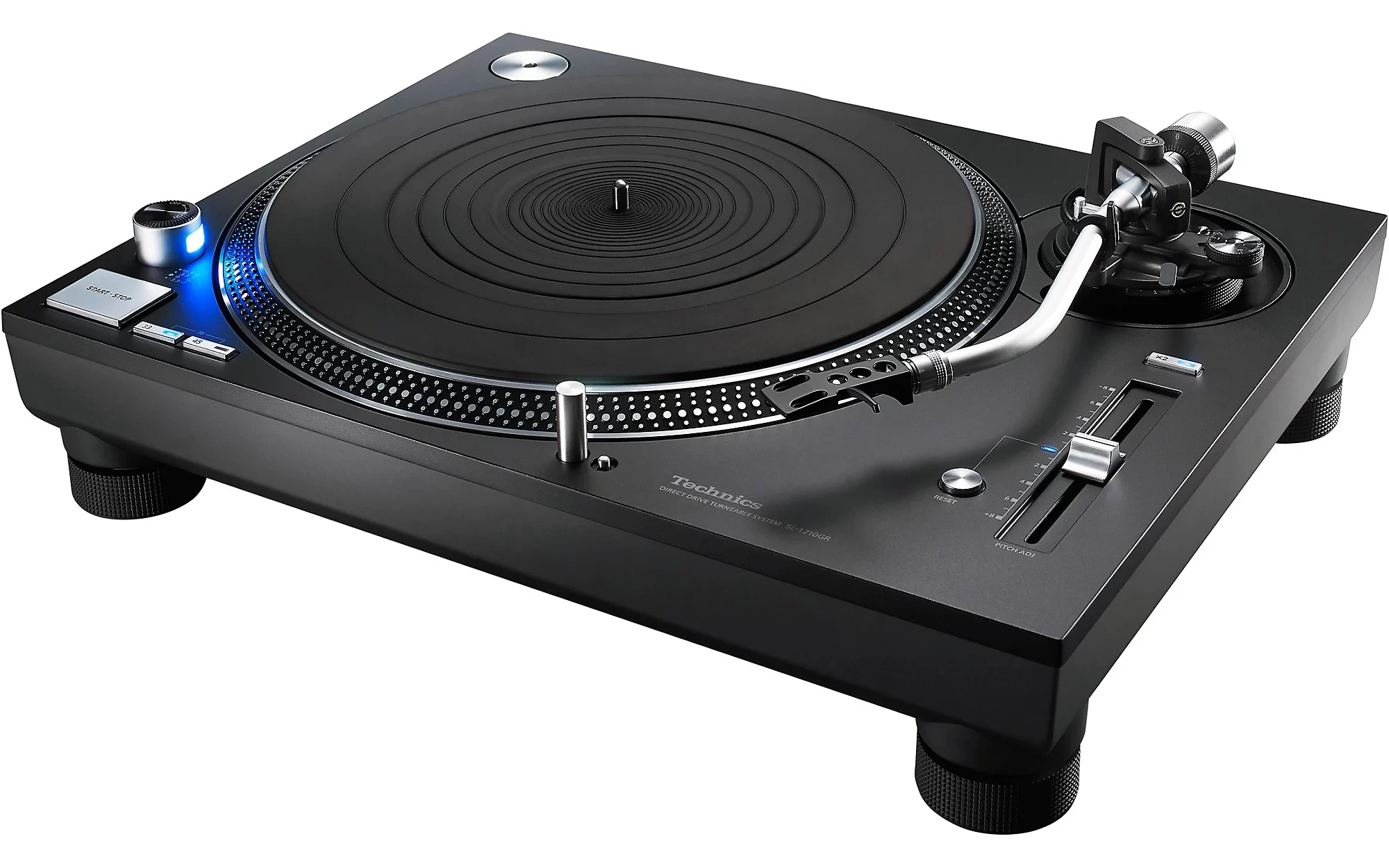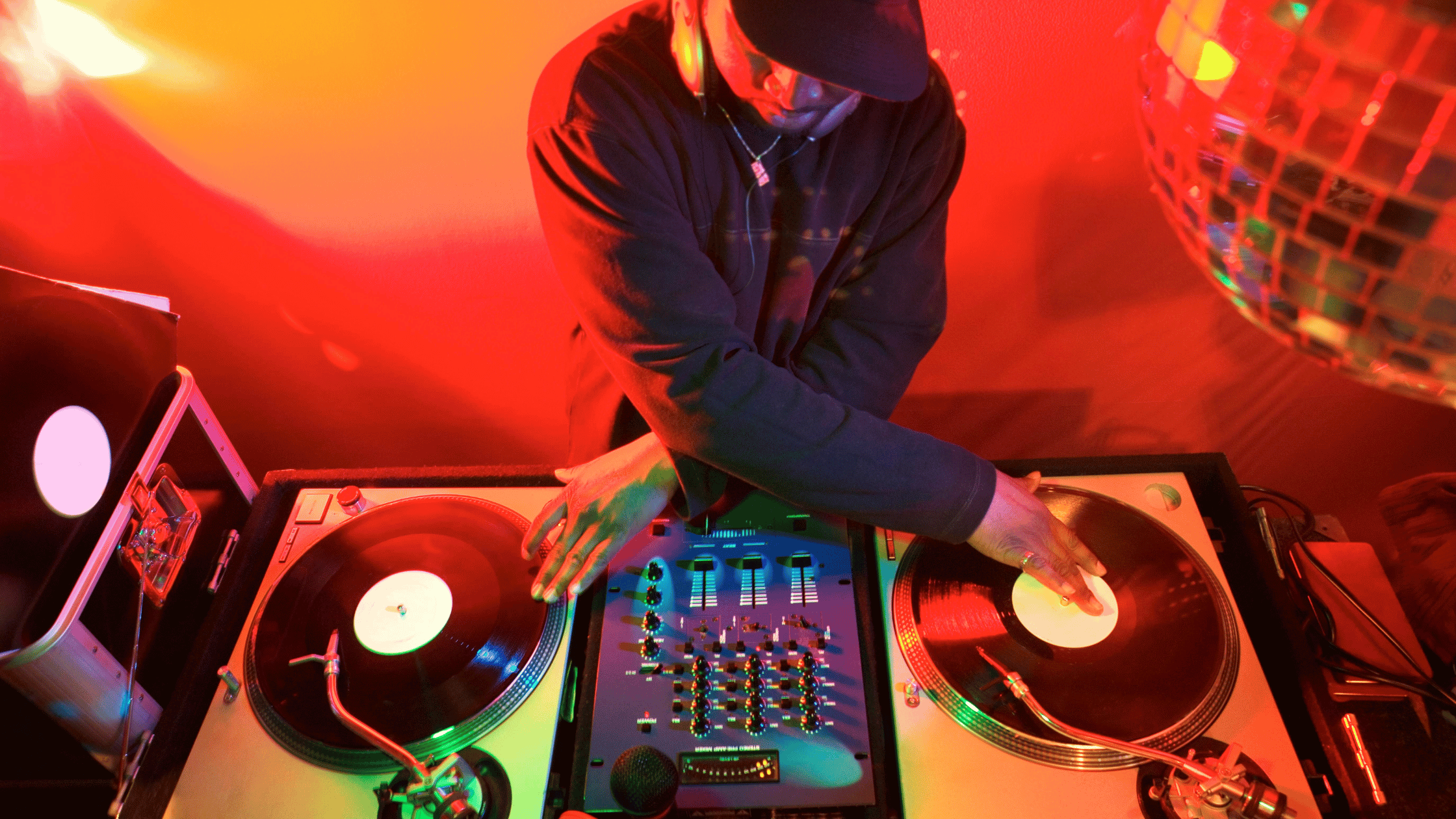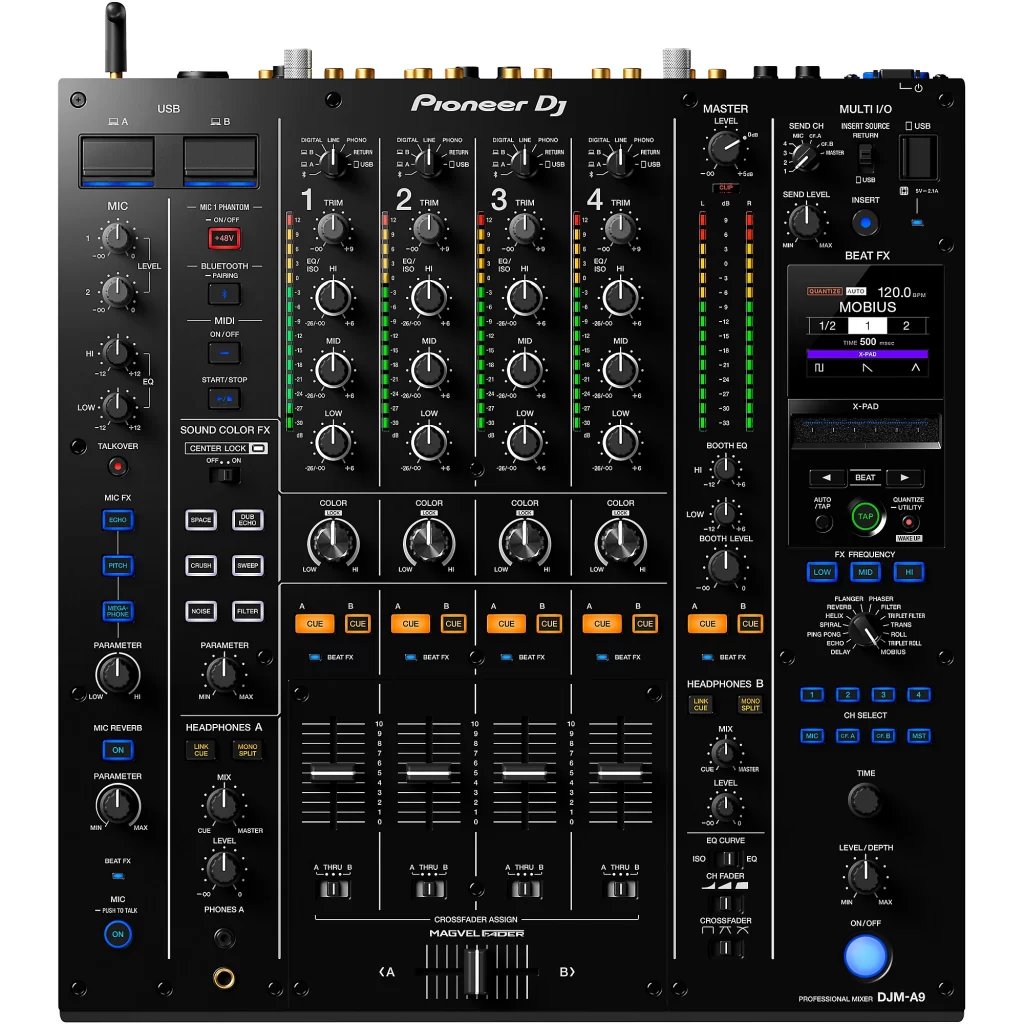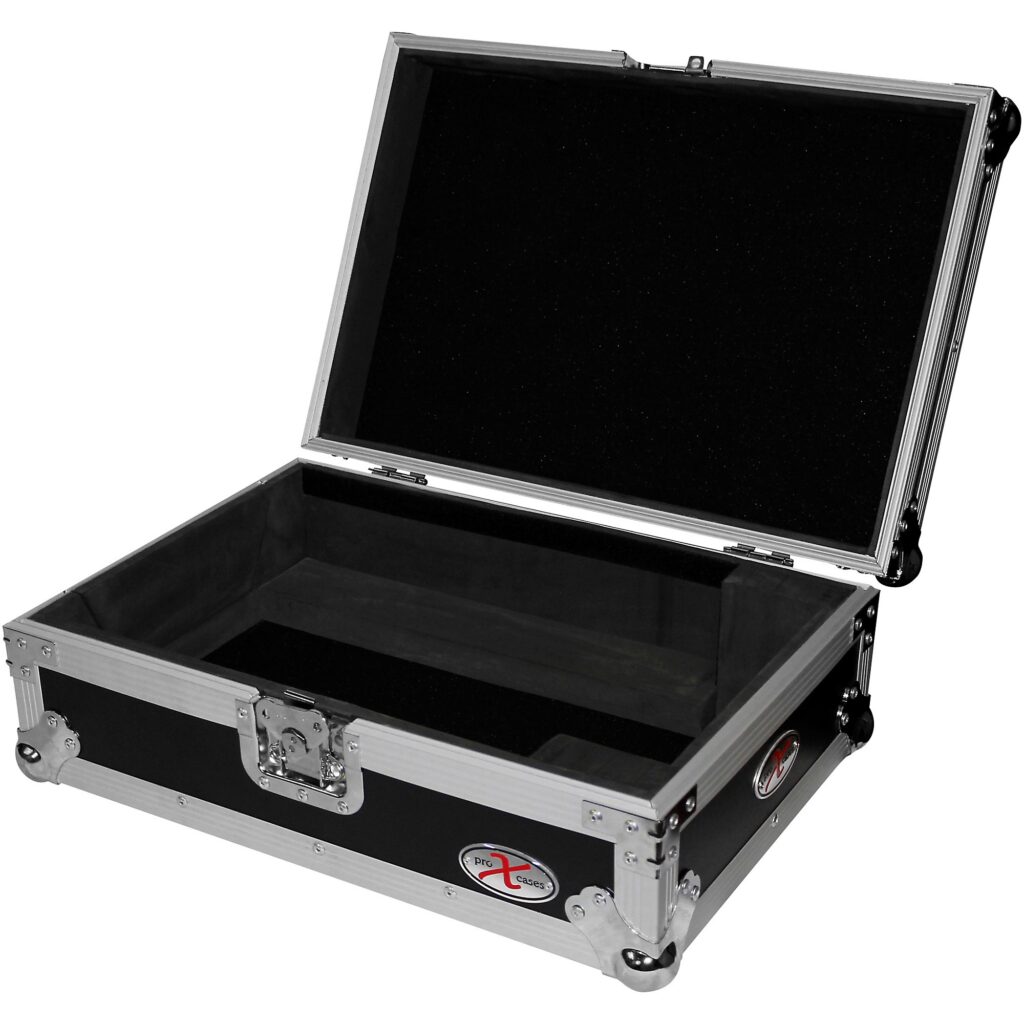Beginner’s Guide to DJing as a Hobby: Essential Tips for Getting Started
Embarking on the journey of DJing as a hobby opens up a vibrant world of music and creativity. At its core, DJing involves mixing tracks, creating seamless transitions, and bringing a personal touch to the music you love.
It’s about understanding the fundamentals of djing which include beat matching, cueing, phrasing, and controlling the energy of your set.
Whether you’re aiming to curate the perfect playlist for your next house party or dreaming of commanding the decks at local clubs, gaining these skills is your first step.
This article contains affiliate links. If you make a purchase through a link on our site you are supporting our continued efforts to educate people like you in finding new and rewarding hobbies. Thank you!

As you dive into the realm of DJing, it’s essential to familiarize yourself with the equipment and software that bring your performances to life. Today, there’s a wide range of DJ hardware from simple controllers to elaborate turntable setups.
Each piece of equipment offers unique features that cater to different styles of DJing, and choosing the right one for you is a personal journey. Together with the right software, your hardware allows for experimentation, enabling you to blend genres, remix tracks, or even produce new music of your own.
Cultivating a deep love for music is at the heart of every successful DJ’s career. Your personal taste will guide your selection process and ultimately define your unique sound.
With a dedication to learning and a passion for music, DJing can become more than just a hobby—it can be a powerful outlet for self-expression and a rewarding way to connect with others through music.
Understanding DJ Equipment

Embarking on your DJ journey requires familiarizing yourself with the fundamental gear that will be the tools of your trade. Understanding the capabilities and role of each piece of equipment is crucial to creating seamless mixes and thrilling performances.
Decks and Turntables
Decks are the modern iteration of traditional turntables, allowing you to play and manipulate music from various sources including vinyl records, CDs, or digital files. Standard equipment for any DJ, they come equipped with a platter to spin the music and a tonearm to read it. If you’re choosing a turntable, you’re engaging with the tactile feel of vinyl, which can be both rewarding and challenging for beginners.
- Direct Drive: Preferred for DJing due to less torque and quicker start-up times.
- Belt Drive: Can absorb motor vibrations but is less reliable for the quick cueing required in DJing.

Mixers and Controllers
The mixer is your command center, allowing you to blend tracks from multiple decks. Key features include volume faders, EQ knobs, and cue buttons for monitoring tracks.
The DJ controller combines decks and a mixer into a single piece of hardware, typically used alongside a computer with DJ software, and they often provide a more portable and affordable solution for novices.
- Channels: Usually 2 or 4, for mixing multiple audio tracks.
- Inputs/Outputs: Crucial for connecting external devices and a PA system.
Headphones and Speakers
Headphones are an essential tool for cueing up tracks and preparing the next song without the audience hearing. Your headphones should offer good sound isolation and comfort for extended use.
Speakers, on the other hand, are your output, reproducing the music for your audience. Beginners should start with a simple, reliable PA system to deliver clear and powerful sound across the venue.
- Closed-back headphones: Provide isolation for better focus on your mix.
- Active Speakers: Include built-in amplifiers, making them an easy setup for new DJs.
Setting Up Your DJ System

When embarking on the journey of becoming a DJ, the first essential step is to establish a solid foundation with a well-structured DJ system. This system encompasses both the software to mix and manipulate music and the physical equipment that allows you to control and deliver your sound.
Choosing Your Software
Your choice of DJ software is pivotal; it’s the brain of your operation. Two widely recognized programs are Traktor by Native Instruments, known for its intuitive interface and robust feature set, and Serato, praised for its reliability and extensive compatibility with a variety of controllers.
Consider your level of expertise and your specific needs when selecting between them—Traktor is often lauded for its innovative effects and advanced features, while Serato is a go-to for seamless integration with hardware and ease of use.
- Traktor: Suitable for both beginners and professionals; integrates well with Native Instruments controllers.
- Serato: Favored for its user-friendly environment; offers a wide range of expansion packs for added functionality.
Connecting Physical Equipment
Once you’ve chosen your software, the next step is integrating your physical equipment. You’ll need a computer or laptop with the requisite specifications to run your chosen DJ software smoothly. A standard DJ setup including a controller, mixer, or turntables connects to your computer typically through a USB port. Ensure that you have all necessary cables on hand—these will usually include USB cables, audio cables (such as RCA), and sometimes a separate power supply if your device is not USB-powered.
Here is a basic connection sequence:
- Connect your chosen DJ controller or mixer to your computer or laptop via USB.
- Make sure your device is recognized by your computer and your DJ software.
- If using external audio hardware, such as a mixer or sound card, connect it using the appropriate cables.
- Follow the manufacturer’s instructions to ensure correct setup; this is often straightforward with products like the TRAKTOR Kontrol Z1.
- Plug in any speakers or headphones to the appropriate outputs on your controller or mixer.
- Test the connection to confirm that sound is being accurately channeled through your speakers and headphones.
Remember, each component in your setup relies on being properly linked, so thoroughness in this step will pay off in performance precision and stability.
Music Collection and Library Management

As you embark on your journey to becoming a proficient DJ, one of the most critical components you’ll manage is your music library. Organizing it effectively is paramount, as it allows you to navigate through various genres and tracks swiftly during your sets. Here’s how to ensure your collection is in tip-top shape:
- Genre Sorting: Begin by categorizing your tracks by genre. It’s helpful to then subdivide by mood, energy level, or any other tag that resonates with your DJ style.
- BPM & Key:
- BPM (Beats Per Minute): This indicates the tempo of a song and is crucial for matching the pace of your set.
- Key: Knowing the musical key allows for smooth transitions by mixing tracks harmonically.
Create a table that outlines BPM ranges for different genres:
| Genre | BPM Range |
|---|---|
| House | 115–130 |
| Techno | 125–135 |
| Hip-Hop | 85–115 |
| Drum and Bass | 160–180 |
- Beat Grids: Analyzing and setting up beat grids will ensure that you understand the beats, bars, and phrases of each track, essential for timing your mixes accurately.
- Cue Points: Marking cue points on tracks can highlight important music sections and make it easier for live mixing.
By taking the time to meticulously organize your music library, you set yourself up for success, ensuring that you have the right track at your fingertips exactly when you need it. Whether you aspire to mix seamlessly through harmonics or get the crowd moving with perfectly timed beat drops, a well-structured library is your best ally.
Mastering the Art of Mixing

To excel in DJing, a deep understanding of mixing is essential. The following segments will focus on core techniques that are critical for creating a smooth set: beatmatching and syncing, using EQ and filters, and deploying effects and loops effectively.
Beatmatching and Syncing
Beatmatching is foundational to DJing, requiring you to align the tempo of two tracks so they play in sync. Pay close attention to the waveform of your tracks to match beats accurately.
Start by selecting a track with a clearer beat as your first track, use your headphones for cueing, and then adjust the tempo of the second track until the beats line up. Utilizing the sync feature can also assist, but develop the ear to do it manually for better DJing skills.
EQ and Filters
Mastering the EQ helps in blending tracks seamlessly. Each track has elements distributed across low (bass), mid, and high (treble) frequencies.
When transitioning, gently decrease the bass of the outgoing track while introducing the bass of the entering track to avoid clashing. Use filters to add variation, subtly removing frequency components to create builds or drops, thus maintaining energy on the dance floor.
Utilizing Effects and Loops
Integrating effects and loops adds depth to your sets. Be strategic; an overuse of effects can overwhelm the mix. Instead, use them sparingly for transitions or to highlight elements of a track.
Experiment with looping a segment of the track to extend a mix or to create more time for harmonic mixing—mixing in key for a pleasing sound. Remember, effects and loops are tools to enhance, not overshadow, the songs you choose to mix.
Advanced DJ Skills

Venturing into advanced DJ skills sets the stage for distinguishing yourself in the DJing community. Mastery of techniques such as scratching and creating your own edits requires a deeper understanding of rhythm, timing, and music theory. Not only will these skills enhance your versatility, but they also empower you to leave a unique stamp on your performances.
Scratching and Turntablism
The art of turntablism demands precision and creativity. Scratching involves moving a vinyl record back and forth on your DJ decks while manipulating the crossfader on the mixer to create rhythms and sounds. Begin by mastering the basics:
- Baby Scratch: The foundation of all scratching techniques, requiring a swift backwards-and-forwards motion on the record without the use of a crossfader.
- Transformer Scratch: Involves quickly moving the crossfader in sync with the record’s movements to create a cutting sound.
Engage with genres like hip-hop, which is rooted in the tradition of turntablism, to understand how scratching can add a dynamic layer to the music.
Creating Your Own Edits and Remixes
Step into the role of a producer by creating your own edits and remixes. Use remix decks and editing software to splice, layer, and alter existing tracks. Essential skills for this include:
- Beatmatching: Sync the tempos of two tracks to play seamlessly.
- Harmonic Mixing: Combine tracks in complementary keys for a more musically cohesive mix.
Invest time in mastering these edits to ensure your sound is polished and club-ready. Dive into house music or techno for examples of genres where DJs often contribute their own reinterpretations to the music.
Getting Comfortable with Performances
Gaining confidence for live DJ performances hinges on two core elements: honing your practice techniques and meticulously preparing for a live set. A strategic approach to practice paves the way for a smooth transition to performing in front of an audience.

Practice Techniques
When you’re practicing for performance, it’s crucial to go beyond simply playing tracks. Focus on timing your phrase mixing to ensure smooth transitions between songs. Utilize beatgrid tools to accurately align beats across tracks. This visual aid is a cornerstone for maintaining consistency in your mixes.
Experimentation is also essential. Try incorporating hot cues into your sets to trigger specific parts of a track spontaneously. This can add a dynamic layer to your performances. If you’re using vinyl, master the use of control vinyl to manipulate digital music with a traditional DJ feel.
Refer to detailed tutorials on your iPad or other devices to refine your skills. For example, guides on Starting to DJ offer insights into bedroom DJing which can be applied when practicing for live sets.
Preparing for a Live Set
When the times comes to prepare for a live set, begin by curating your playlist carefully. Know your audience and select tracks that resonate with the crowd you’ll be performing for. Planning your playlist also involves deciding when you might want to be creative with your mixing and when to keep it simple and let the tracks play out.
Ensure all your equipment is in working order, and have backups ready. This could mean having a second iPad with your setlist and software installed as a fail-safe. If you’re using an alternative, like a laptop, make sure it is fully charged and that you have the necessary cables and chargers.
By intertwining disciplined practice with thorough live set preparations, you’ll find your performances becoming more assured and your stage presence growing.
Digital vs. Vinyl DJing

When you’re starting out as a DJ, the choice between digital and vinyl formats is pivotal. Each offers its unique experience, challenges, and rewards. It’s essential to understand what both entail to make an informed decision.
Vinyl DJing:
- Equipment: You’ll need a pair of turntables and a mixer. Optionally, vinyl DJs often collect vinyl records, which can be a significant ongoing expense.
- Skillset: Vinyl DJing is tactile; it requires manual dexterity to manipulate the records and needle.
- Experience: The analog sound of vinyl is warm and rich. Playing vinyl offers a classic DJing experience that many purists prefer.
Digital DJing:
- Equipment: Options include CDJs, controllers, or even DJing software on your laptop. Digital formats allow for a more portable and sometimes less expensive setup.
- Skillset: While digital DJing also requires skill, it often includes helpful features like sync buttons and looping functions to aid in mixing tracks.
- Experience: Digital provides ease of use, access to an extensive music library without the physical bulk, and advanced features that can enhance creativity.
Comparison Table:
| Vinyl DJing | Digital DJing | |
|---|---|---|
| Sound Quality | Warm, authentic | Varies with file quality |
| Portability | Low (heavy records) | High (USBs, laptops) |
| Cost | Potentially high | More scalable |
| Learning Curve | Steeper | Less steep with helpful aids |
| Music Library | Limited by collection | Virtually unlimited |
Evaluate your preferences, budget, and dedication to the craft when choosing. Your choice between vinyl and digital will shape your DJing journey.
Promoting Yourself as a DJ

As you embark on your journey as a DJ, strategic self-promotion is vital in building a reputation and gaining exposure. Keep in mind the importance of a well-crafted online presence and the value of showcasing your skills at local venues and events.
Building an Online Presence
Creating a strong online presence is essential for your success as a DJ. Start by:
- Developing a professional website: This serves as your digital portfolio where potential clients can discover your brand, style, and services.
- Utilizing social media platforms: Regularly post content related to your DJ activities—mixes, event posters, or behind-the-scenes footage—to engage your audience.
- Engaging with online communities: Join DJ forums and groups to network, share your work, and keep up with industry trends.
Remember, consistency is key. Maintain your brand across all channels to increase recognition and attract a loyal following.
DJing at Local Venues and Events
Getting out there and performing is a surefire way to gain experience and notoriety:
- Connect with local bars and clubs: Establish relationships with venue owners and offer your DJ services for their next event.
- Offer to play at local events: Whether it’s a festival or a private party, live events are excellent opportunities to showcase your skills to a wider audience.
- Consider radio opportunities: If there’s a community or online radio station, inquire about guest spots or regular shows to reach new listeners.
Networking and showcasing your ability to adapt to various styles and events are crucial. Each gig could lead to the next, so give every performance your best.
Transporting and Caring for Your DJ Gear
When you’re ready to take your DJ equipment on the go, proper transportation and care are crucial to keep your gear functioning perfectly. Here’s how to manage your DJ decks, CDJs, and controllers.
DJ Bags and Cases:
Always transport your equipment in padded bags or cases designed for DJ gear. Look for options with firm, snug fits that hold your equipment tightly to prevent movement during transit. Bags often feature shoulder straps for convenience, while cases provide sturdier protection. Use cases for heavier equipment and bags for lighter items.
Packing Your Equipment:
- Use bubble wrap or foam inserts to secure any loose or moving parts.
- Wrap cables separately to avoid tangling, and ensure sharp edges are covered to prevent scratching.
- Always place your gear horizontally when packing into vehicles to minimize pressure on knobs and faders.
At the Venue:
- Set up your gear on a stable surface.
- Keep drinks and liquids away to avoid spills.
- Use a dust cover when not in use to protect from debris.
Maintenance:
- Clean your gear regularly with a soft, dry cloth.
- Check cables and connections for wear and tear.
- Update your firmware and software as needed to ensure compatibility and performance.
Remember, taking the time to pack and care for your DJ equipment properly can greatly extend its lifespan and ensure it’s ready to perform whenever you are.
Frequently Asked Questions
When embarking on your DJing journey, you may have several questions about getting started, learning, and developing your skills. This section provides specific answers to common queries for beginner DJs.
What equipment is essential for a beginner DJ to start practicing?
To begin practicing as a DJ, you need a basic DJ setup comprising DJ controllers, headphones, and speakers. Controllers are an all-in-one solution with a mixer and decks to emulate the traditional DJ setup.
Can I learn to DJ effectively using online resources, and where should I start?
Yes, you can develop DJ skills using online resources. A good starting point is DJing tutorials that cover beatmatching and mixing. Focusing on a few key lessons at a time can prevent feeling overwhelmed.
What software recommendations would you give to a novice wanting to DJ with a laptop?
For novices, software like Serato DJ Lite or VirtualDJ is recommended. They have free versions that are user-friendly and provide the necessary features to start mixing on a laptop.
How can one begin DJing at parties and what skills are crucial for success?
Begin DJing at parties by creating a diverse music library and practicing reading the crowd to keep the energy up. Essential skills include beatmatching, song selection, and smooth transitions.
Are there any recommended courses or tutorials tailored for beginners in DJing?
There are many online courses designed for beginners. Websites like Native Instruments Blog offer structured lessons that can guide you through the basics systematically.
As a beginner, how can I integrate DJing into my life as a hobby without breaking the bank?
Start by seeking affordable or used gear and leveraging free or trial versions of DJ software. Practice with digital music you already own and commit to regular practice sessions to improve your skills without significant financial investment.




